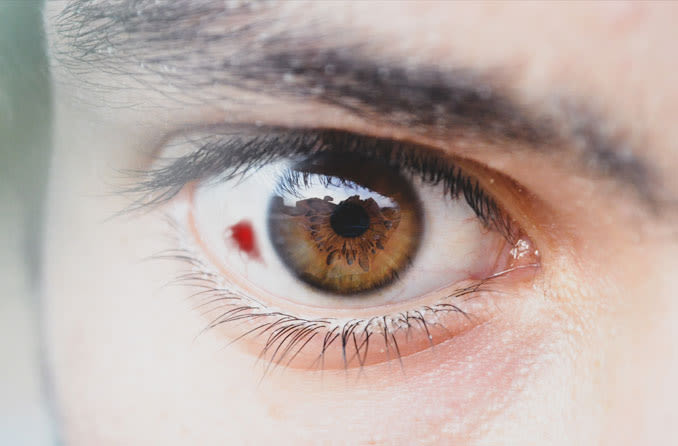Subconjunctival haemorrhage (blood in eye): Causes and treatment

A subconjunctival haemorrhage is leakage of blood from tiny blood vessels located underneath the thin, clear membrane (conjunctiva) that lies atop the white of the eye (sclera).
The pooling of this blood under the conjunctiva causes the affected area of the sclera to turn bright red. This red area can be quite small, or it can cover the entire white of the eye.
Subconjunctival haemorrhages look scary but they typically do not cause any vision problems and they resolve without treatment within a week or two.
Any time you develop a red eye, you should see an optometrist to determine if the redness is due to a harmless subconjunctival haemorrhage or a more serious condition, such as an eye infection.
WORRIED ABOUT THAT BLOOD IN YOUR EYE? Find an optometrist near you.
What causes a subconjunctival haemorrhage?
Although it’s not always possible to identify the exact cause of a subconjunctival haemorrhage, possible factors include:
Coughing
Sneezing
Use of aspirin or blood thinners
Trauma to the eye
Eye surgery, including LASIK and cataract surgery
A blood clotting disorder
How are subconjunctival haemorrhages treated?
If you are taking aspirin or blood thinners, continue using them unless your doctor specifically instructs you to do otherwise. Lubricant artificial tears can soothe an eye that has a subconjunctival haemorrhage, but eye drops cannot repair the broken blood vessels.
Do not rub your eye. This can increase the risk of re-bleeding and worsen the subconjunctival haemorrhage.
How long do subconjunctival haemorrhages last?
In most cases, it takes about seven to 10 days for a subconjunctival haemorrhage to disappear. During this time, the affected area can change colour, like a bruise. If you don’t see a noticeable improvement within a week, see your optometrist.
Page published on Monday, 16 March 2020






